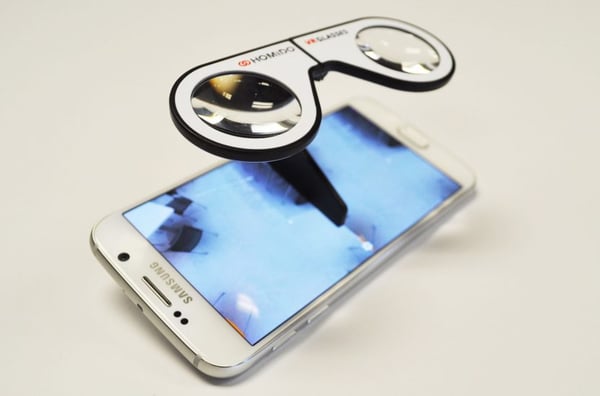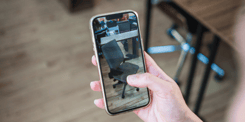In the world of both architecture and design, creating a lasting first impression and impactful pitches is key. This is often done through visualization methods such as renderings, models, and others to give prospective clients a realistic look at what the final product could look like. Many firms will often end up using the same CAD Software such as SketchUp and many pitches will end up having very similar visual elements and previews.
So, how can you make your firm stand out from others during a pitch? We believe that pitching with a VR element is a unique and engaging way to make your pitch stand out and offer your prospective clients a more accurate life-like look at your designs. And if you use a tool like Yulio that converts your preexisting CAD designs into VR, it’s simple to get started with pitching with VR. We know that with any new tool comes questions about how to properly work it into your pitching process and how to prepare for a meeting. In this article, we will go over considerations and tips to help you capitalize on your pitch by involving VR.
What do I Need for a Killer Pitch that Includes VR?
There are a few things you should consider for your journey into pitching with VR. You want to make sure that when you have VR in a pitch meeting it is seamless and works naturally with your preexisting presenting methods. We recommend considering the following
- The physical viewing experience – How are you going to present the VR portion of your pitch? Consider the VR headset or accessory you are using and how your client will react to it. Do you want something fully immersive or something more casual and easy to pick up and share?
- Your client – would this client be open to viewing something in VR? What are some solutions for someone who may be claustrophobic or susceptible to motion sickness?
- When to start – Where in your pitch should you include the VR portion?
We believe these areas are key to consider when setting up your pitch with VR. Below we break down each a little further and offer some tips on how to best approach them.
The Viewing Experience
Stepping into a VR experience can throw some people off as they enter a virtual environment, especially those who may be trying it out for the first time. You can always offer multiple headset options for people who may not want to be fully cut off from the real world.
Some headsets, such as the Meta Quest 2 offer an extremely immersive experience and have dedicated controller support if needed. However, it can be isolating and be too much for a new user. It is also a decent investment at $399
 The Homido Mini is a very accessible VR accessory
The Homido Mini is a very accessible VR accessory
Another option that we recommend often at Yulio is the Homido Mini. The Homido Mini is a key player and our pick for VR headsets/accessories that allow you to try VR before jumping into more complex and advanced hardware. Costing around $15 each and working with any smartphone, the Homido have greatly helped revolutionize the accessibility of VR and have allowed small independent businesses and firms to harness the power of virtual reality. Simply attach it to your phone and you can get a pretty satisfactory VR experience that isn’t overly isolating.
Consider Your Client/Audience
You’ll want to consider who you will be presenting to with VR and make sure you can tailor the experience to them. It is possible that you could have a client who could be opposed to wearing a headset so you may want to feel out their openness to the tech before the meeting.
If it is you are working with a new VR user remember to guide the user to look up, down, and all around to help them feel oriented in a new virtual environment. Our top tip when using a headset is to remove the straps so any time the user feels uncomfortable, all they have to do to remove the headset is to lower it from their gaze. And don’t forget to give your audience time to feel adjusted to the virtual environment. This decreases their likeliness of feeling dizzy or motion sick during the experience.
However, it may be possible that someone may just not want to view VR at all. It’s important to have an alternate option that can still take advantage of the technology while meeting them at their comfort level. At Yulio, you can view a VR experience through what we like to call the “fishtank” view. It allows a client to simply view the project from a first-person perspective and move around the experience with their mouse. It’s a great way to still provide a level of interactivity but not force someone into a situation they wouldn’t enjoy.
A "fishtank" view like this is a good alternative that still allows someone to explore a VR environment without a headset
Where Should I Include VR in My Pitch?
You may be wondering when the best time is to break out the VR headsets during your pitch. We’ve heard from clients a few different responses, but generally, the best time would be when you usually would preview your other visualizations of the project. We would recommend first presenting the CAD version of your project to highlight the elements that have gone into the space and give greater context to its specs. After, view it in VR and break down communication barriers that may have come up from viewing the plans in CAD, floor plans, line drawings, etc.
In general, we find that when people are viewing something in VR, that is when they are the most engaged and will start asking more questions. So make sure you are ready for this in the flow of your pitch. Reserve time for your clients to explore the design in 3D and play around with other features you may have added. For example, in Yulio we provide features such as audio hotspots or the ability to switch between different configurations in your designs.
Am I Ready for VR in My Pitches?
We have several articles that go over how you can start incorporating VR into any business. It doesn't have to require any large investments or top-of-the-line tech. However, there are definitely a few considerations to take into place. Are your meetings conducted remotely or in person? Do you want to invest in a headset or rely on mobile devices to translate your VR experience? Or simply use a desktop solution?
A key consideration is that when you're going into your first pitch meeting where you want to use VR, you don't want it to be your first time using the technology. Practice and prepare in your comfortable environment so that your use of the technology during a pitch is flawless and comfortable and without a hitch.
Start Pitching with VR
We hope this article has given you some advice to consider when starting to plan how you can start pitching with VR. It’s important to prepare ahead so that when you do start, it is seamless and natural. One final piece of advice is to practice with the tech yourself and explore it at length so that you can be the expert when you bring VR to pitches.
VR has the power to elevate and transform your pitches to help you get to the sale quicker. Companies that have committed to integrating VR into their practices are seeing direct ROI from those efforts. From how you should budget for VR to choosing the right VR solution for your business, for more information on how to integrate VR into your firm for maximum ROI, you can check out our Whitepaper here. To learn more about Yulio and how you can start pitching with VR, book a demo to speak to one of our experts -- we would love to chat with you!






.jpg?width=245&height=150&name=iStock_88161583_XLARGE%20(1).jpg)
